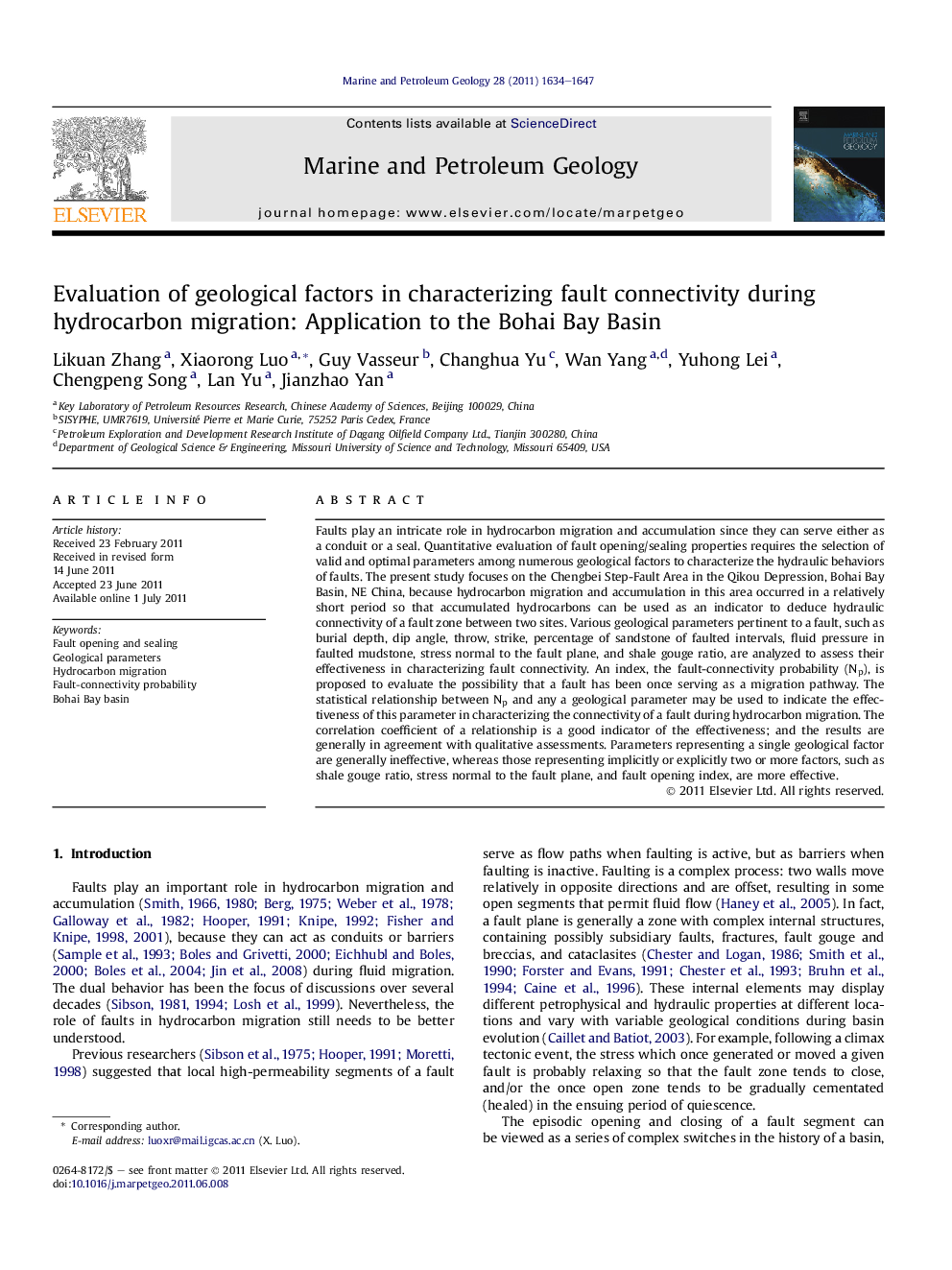| Article ID | Journal | Published Year | Pages | File Type |
|---|---|---|---|---|
| 4696008 | Marine and Petroleum Geology | 2011 | 14 Pages |
Faults play an intricate role in hydrocarbon migration and accumulation since they can serve either as a conduit or a seal. Quantitative evaluation of fault opening/sealing properties requires the selection of valid and optimal parameters among numerous geological factors to characterize the hydraulic behaviors of faults. The present study focuses on the Chengbei Step-Fault Area in the Qikou Depression, Bohai Bay Basin, NE China, because hydrocarbon migration and accumulation in this area occurred in a relatively short period so that accumulated hydrocarbons can be used as an indicator to deduce hydraulic connectivity of a fault zone between two sites. Various geological parameters pertinent to a fault, such as burial depth, dip angle, throw, strike, percentage of sandstone of faulted intervals, fluid pressure in faulted mudstone, stress normal to the fault plane, and shale gouge ratio, are analyzed to assess their effectiveness in characterizing fault connectivity. An index, the fault-connectivity probability (Np), is proposed to evaluate the possibility that a fault has been once serving as a migration pathway. The statistical relationship between Np and any a geological parameter may be used to indicate the effectiveness of this parameter in characterizing the connectivity of a fault during hydrocarbon migration. The correlation coefficient of a relationship is a good indicator of the effectiveness; and the results are generally in agreement with qualitative assessments. Parameters representing a single geological factor are generally ineffective, whereas those representing implicitly or explicitly two or more factors, such as shale gouge ratio, stress normal to the fault plane, and fault opening index, are more effective.
► In this study we evaluate if a fault may serve as a conduit for oil migration. ► Geoparameters pertinent to a fault are assessed for characterizing fault sealing. ► Accumulated oils are used as indicators to deduce hydraulic connectivity of a fault. ► A concept of fault-connectivity probability offers a conduit for statistical analyses.
